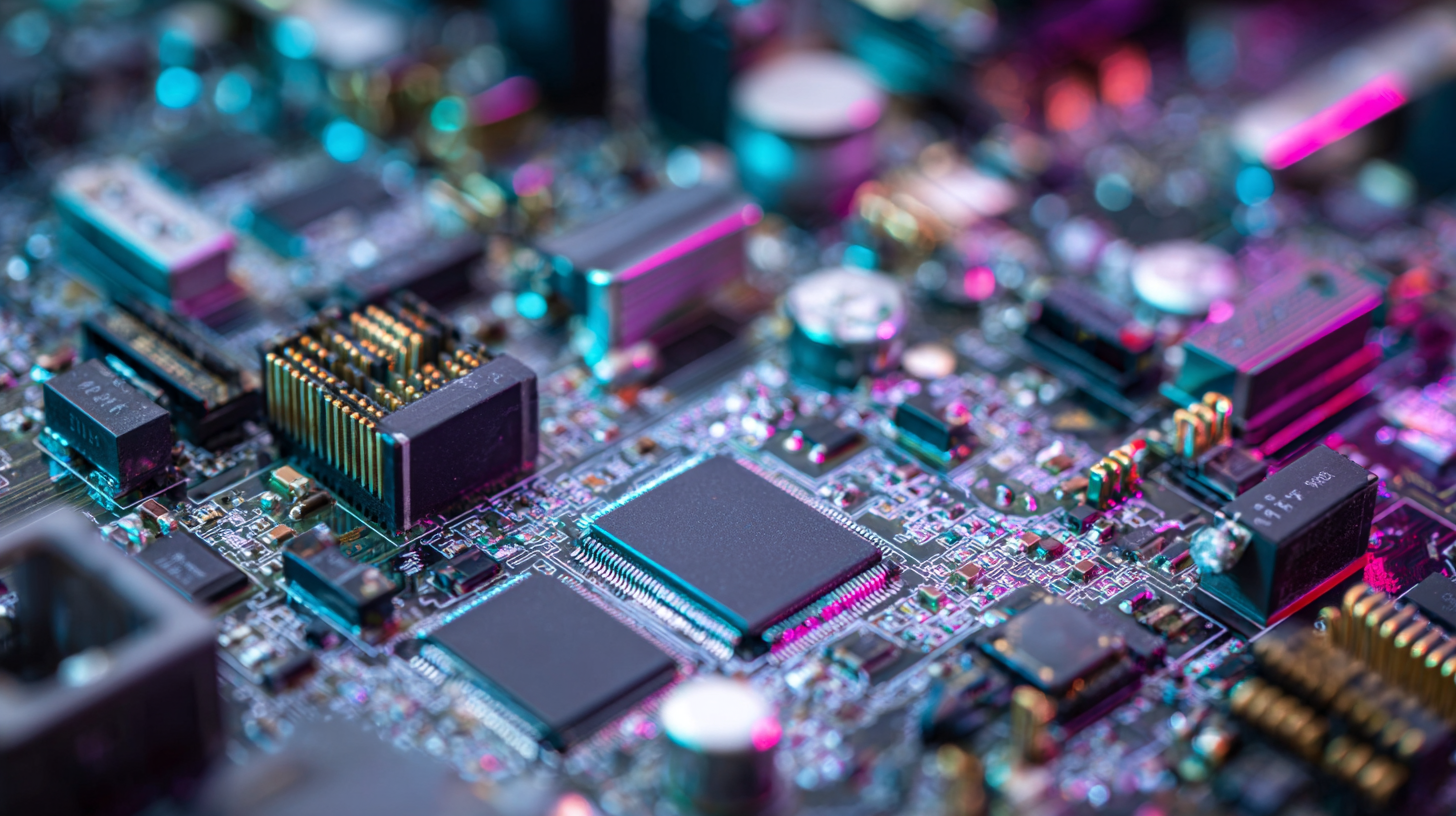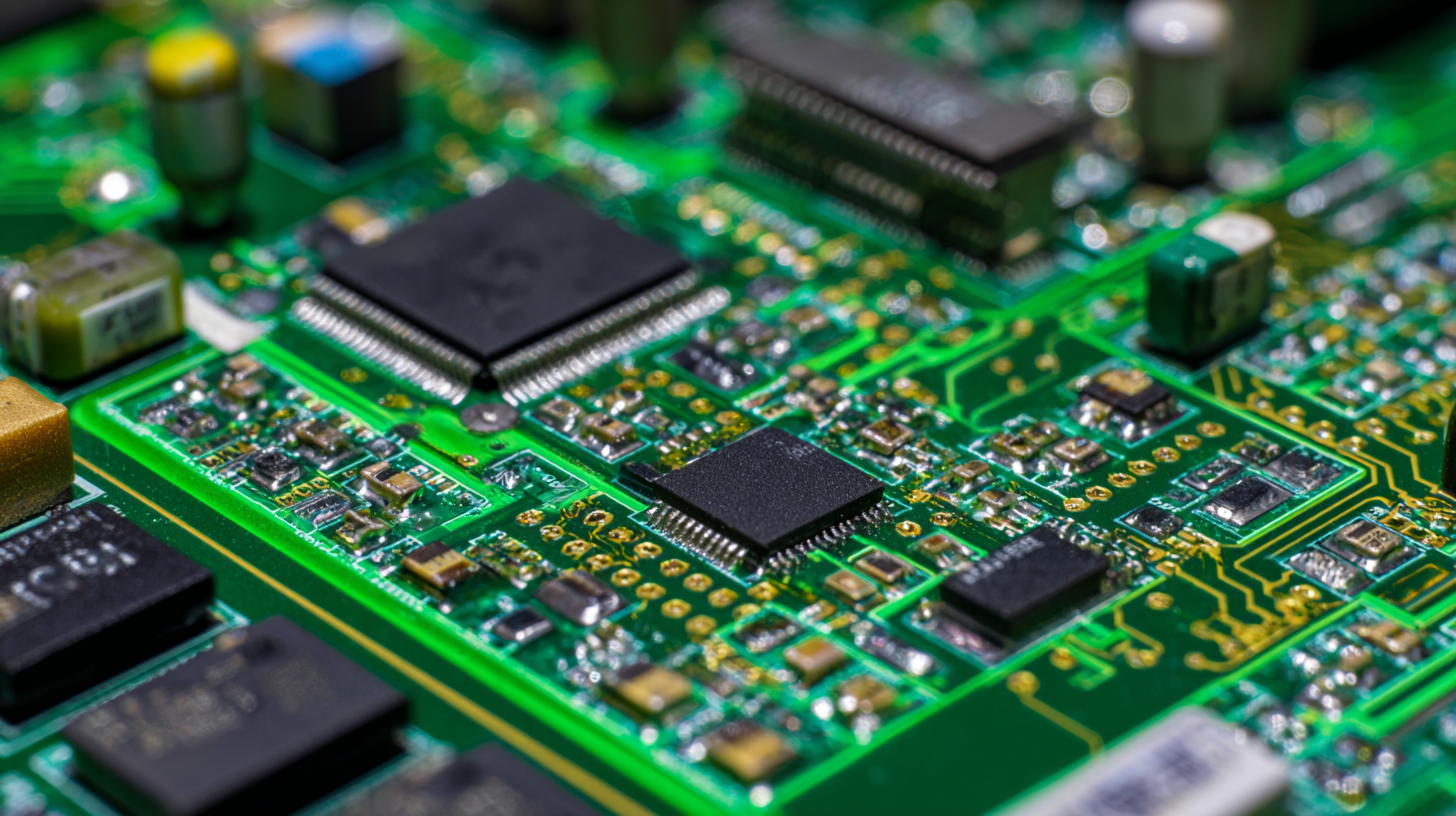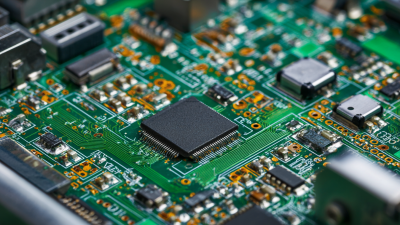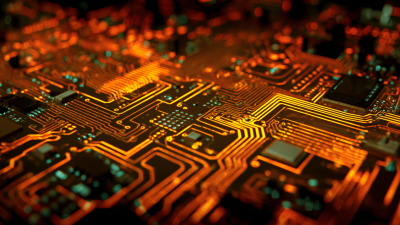Blog
Unlocking the Future of Electronics: The Essential Guide to PCB Production Innovations
In the ever-evolving landscape of electronics, "pcb production" stands at the forefront of innovation, driving advancements that redefine the capabilities of modern devices. This essential guide aims to illuminate the transformative techniques and technologies reshaping the PCB manufacturing process. From the integration of advanced materials to the adoption of automated production methods, the innovations in PCB production not only enhance quality and efficiency but also enable the creation of more complex and compact electronic products. As we delve into this comprehensive exploration of PCB advancements, we will uncover critical insights on how these developments are unlocking new possibilities for engineers and designers alike, ultimately paving the way for a smarter, more connected future.

Innovative Materials and Their Impact on PCB Production Efficiency
The evolution of printed circuit board (PCB) production has been significantly influenced by innovative materials that enhance efficiency and performance. Advanced materials like low-loss substrates and high-density interconnects allow manufacturers to produce boards that are smaller, lighter, and more capable of supporting modern electronic demands. By integrating these materials into the manufacturing process, companies can achieve greater functionality without sacrificing quality.
**Tip:** Consider sourcing materials that are environmentally friendly and recyclable. This not only boosts your production efficiency but also aligns your business with a growing demand for sustainable manufacturing practices.
Additionally, the use of novel chemicals in the PCB fabrication process can lead to improved adhesion and conductivity. For example, advancements in conductive inks and laminates enable complex designs that are both reliable and cost-effective. As the industry shifts towards tighter tolerances and greater miniaturization, these materials become essential in maintaining high standards while optimizing production timelines.
**Tip:** Stay updated on the latest material innovations through industry publications and trade shows. Knowledge of emerging technologies can provide your company with a competitive edge in the rapidly evolving electronics market.
Innovative Materials and Their Impact on PCB Production Efficiency
Streamlining PCB Design Processes with Advanced Software Tools
The landscape of PCB design is rapidly transforming, driven by advanced software tools that streamline the entire production process. According to a recent report by the IPC, companies utilizing cutting-edge design software have seen a 30% increase in efficiency, significantly reducing time-to-market for new products. These innovative tools enable engineers to visualize complex layouts instantly, facilitating real-time collaboration and minimizing the potential for errors that can lead to costly revisions.
Moreover, the integration of artificial intelligence (AI) and machine learning into PCB design software has revolutionized the way designers approach their projects. A study by McKinsey states that adopting AI technologies can boost design productivity by up to 40%. Automated features such as design rule checks and predictive routing ensure that high-quality standards are consistently maintained throughout the design process. These advancements not only enhance the quality of PCB production but also empower designers to focus on more strategic tasks that drive innovation in electronic products.

Embracing Automation in PCB Manufacturing for Enhanced Precision
The rapid evolution of automation in PCB manufacturing is transforming the landscape of electronics production. As the demand for smaller, faster, and more efficient electronic devices rises, manufacturers are increasingly embracing advanced automation technologies to enhance precision and productivity. According to a report by MarketsandMarkets, the global PCB market is projected to reach $87.1 billion by 2025, reflecting a compound annual growth rate (CAGR) of 4.3% from 2020. This growth is closely tied to the integration of automated processes, which significantly reduce human error and production time.
Implementing automation in PCB fabrication not only boosts efficiency but also ensures higher quality products. Automated Optical Inspection (AOI) systems, for example, have been proven to detect defects with over 98% accuracy, as highlighted in a study from IPC – Association Connecting Electronics Industries. Additionally, automated assembly lines can operate at speeds up to 20% faster than manual counterparts, allowing manufacturers to meet the increasing demand without compromising on precision. This shift towards automation is essential for staying competitive in an industry where the cost of errors can be substantial, underscoring the importance of these innovations for the future of electronics production.

Sustainable Practices in PCB Production: Reducing Environmental Impact
Sustainable practices in PCB production are becoming increasingly essential as the electronics industry seeks to minimize its environmental footprint. One of the primary innovations in this area is the use of eco-friendly materials that can replace traditional, hazardous substances. By adopting high-performance bioplastics and non-toxic chemical alternatives, manufacturers not only enhance the safety of their products but also contribute to reducing landfill waste. This shift toward sustainable materials is a crucial step in designing PCBs that align with global environmental standards.
Moreover, advancements in manufacturing technologies, such as additive manufacturing and automated processes, are optimizing resource use and efficiency. By implementing precision layering and minimizing material waste during production, companies can significantly decrease their energy consumption and emissions. The integration of recycling programs for end-of-life PCBs further underscores the commitment to sustainability, allowing valuable metals and components to be recovered and reused. This holistic approach to PCB production not only benefits the planet but also positions companies as leaders in a market increasingly driven by consumer demand for environmentally responsible practices.
Emerging Technologies Shaping the Future of PCB Assembly and Testing
The landscape of PCB assembly and testing is rapidly transforming due to emerging technologies that enhance efficiency and precision. Automation plays a pivotal role, with robotics and AI-driven processes minimizing human error and speeding up production times. For instance, advanced robotic arms equipped with vision systems can accurately place components on PCBs, significantly reducing the time and costs associated with manual assembly. Moreover, the integration of AI algorithms enables predictive maintenance of machinery, ensuring continuous operation and minimizing downtime.
In addition to automation, innovations in materials and design software are reshaping PCB production. Flexible and high-density interconnects are becoming increasingly popular, allowing for more compact and versatile electronic devices. The advent of simulation software facilitates real-time testing and prototyping, enabling designers to identify potential flaws in the PCB layout before physical production. This not only accelerates the development cycle but also enhances the reliability of electronic products in an ever-evolving market. As these technologies continue to advance, the future of PCB assembly and testing seems poised for unprecedented growth and development.
Unlocking the Future of Electronics: The Essential Guide to PCB Production Innovations
| Technology | Description | Impact on PCB Production | Future Potential |
|---|---|---|---|
| 3D Printing | Additive manufacturing technology for rapid prototyping and production. | Reduces lead times and material waste, allowing for more complex designs. | High potential for customization and on-demand production. |
| AI and Machine Learning | Utilization of algorithms to optimize design and testing processes. | Improves accuracy in defect detection and speeds up testing phase. | Transformative potential in predictive maintenance and quality control. |
| Flexible Circuits | Thin, lightweight circuits capable of bending and folding. | Enables new applications in wearable electronics and compact devices. | Expected growth in IoT and medical device markets. |
| RFID and IoT Integration | Integration of RFID technology with IoT for tracking and data sharing. | Enhances efficiency in inventory management and asset tracking. | Promises extensive applications across various industries. |
| Automation in Assembly | Use of robotic systems for the assembly of PCBs. | Increases production speed and reduces human error. | High scalability and flexibility in manufacturing processes. |
Related Posts
-

7 Essential Tips for Sourcing the Best PCB Production Worldwide
-

Understanding the Industry Standards Challenges for Best PCB Circuit Production
-

Solutions for Sourcing the Best PCB Circuit Boards Globally: Your Comprehensive Guide
-

Embracing Innovation: The Future of PCB Printed Circuit Board Technology and Applications
-

Mastering PCB Prototyping Techniques for Beginners in Electronics
-

Unlocking the Advantages of Using Prototype PCB Boards in Modern Electronics Design
